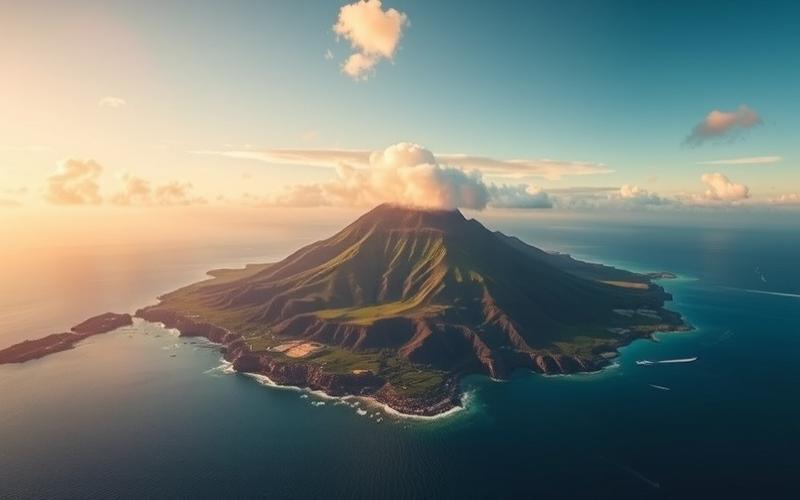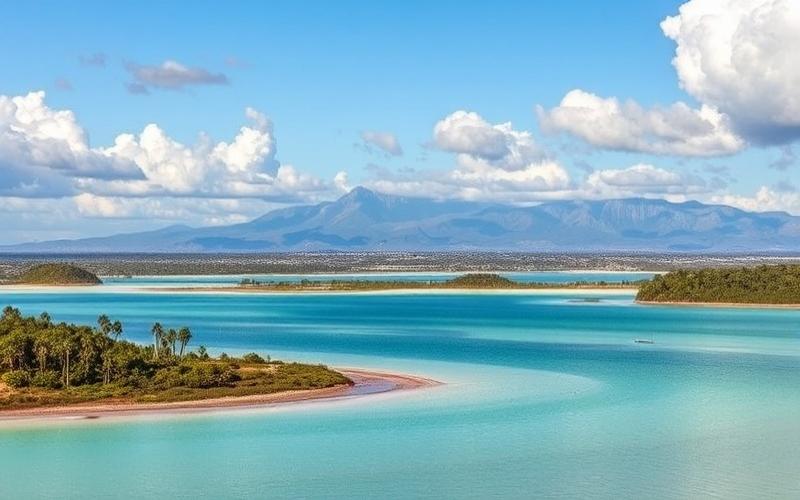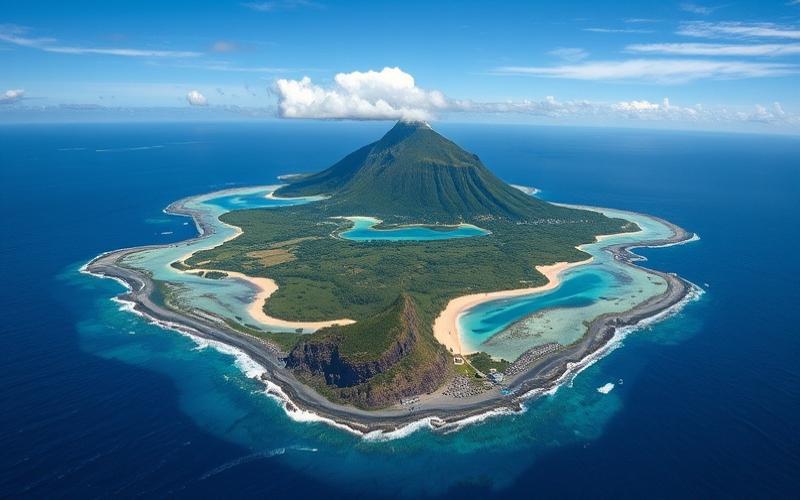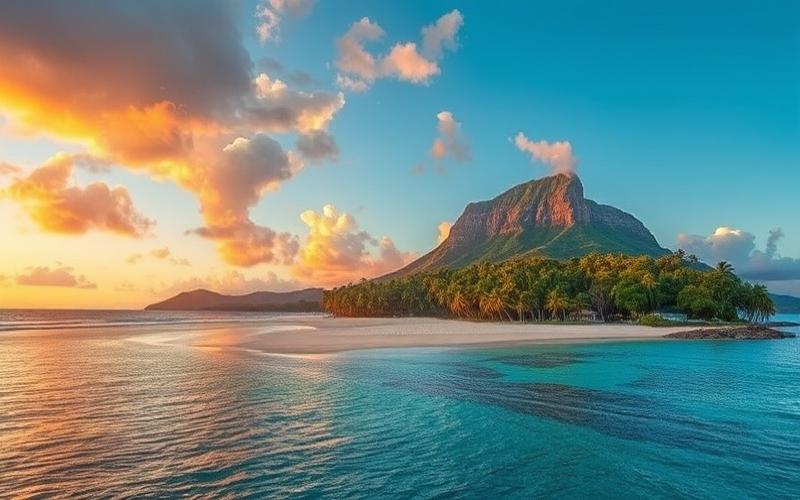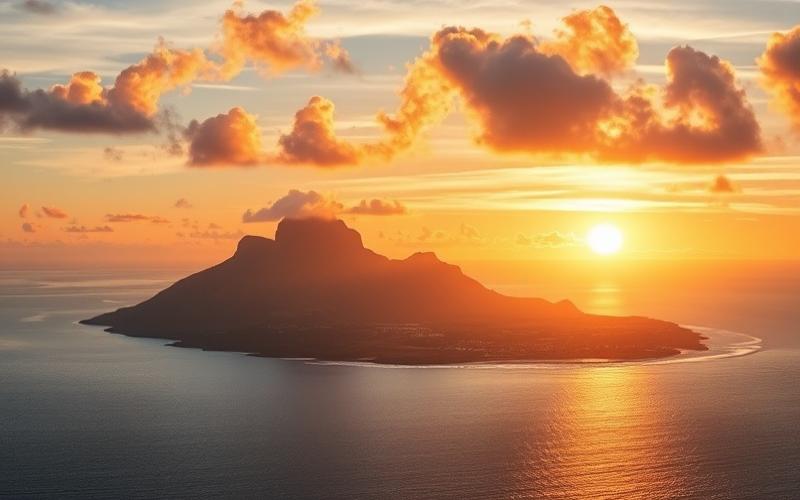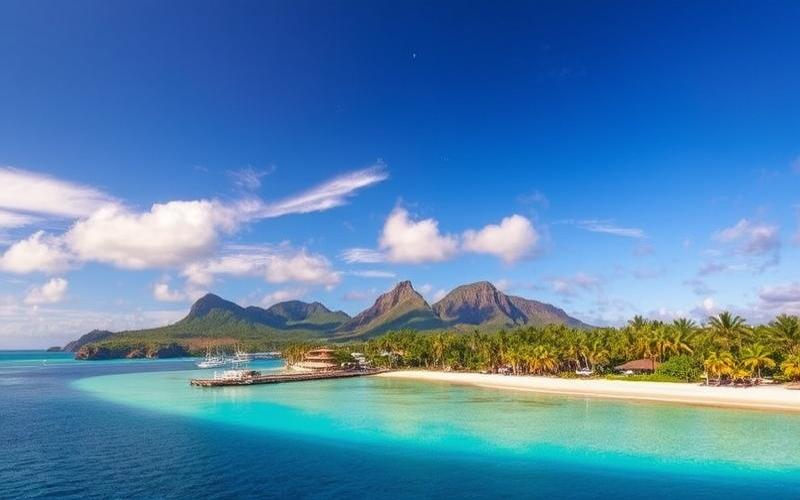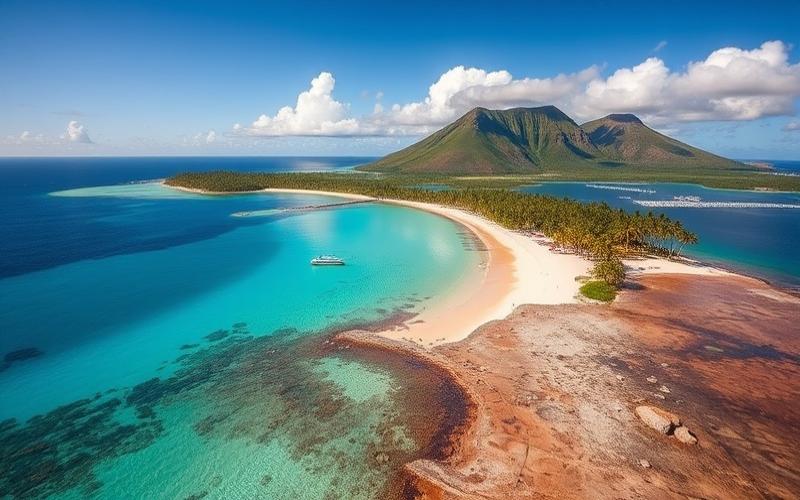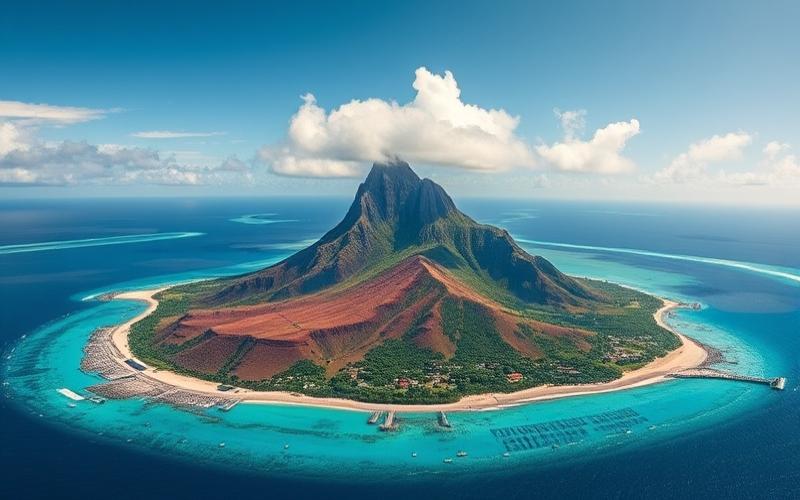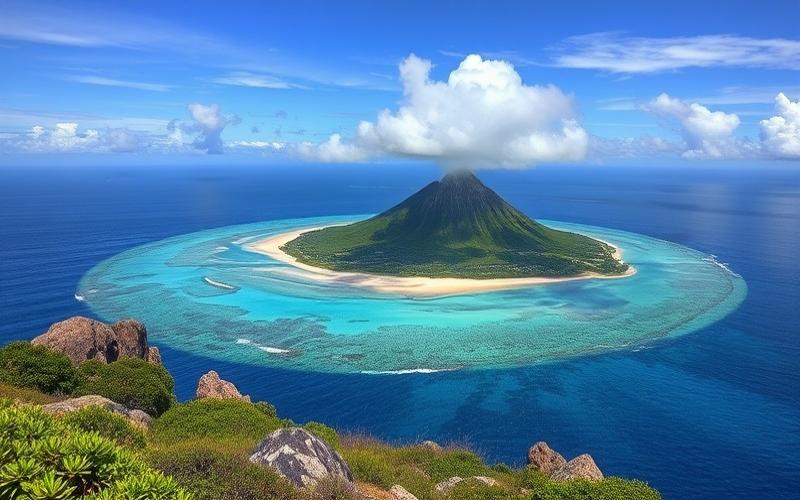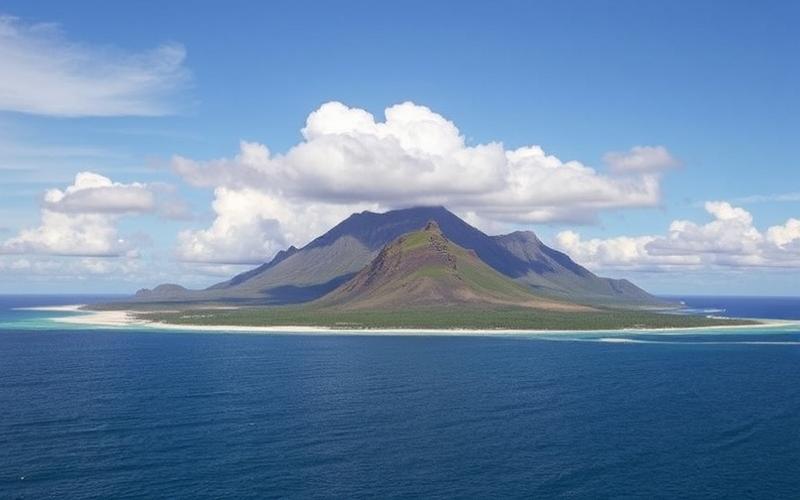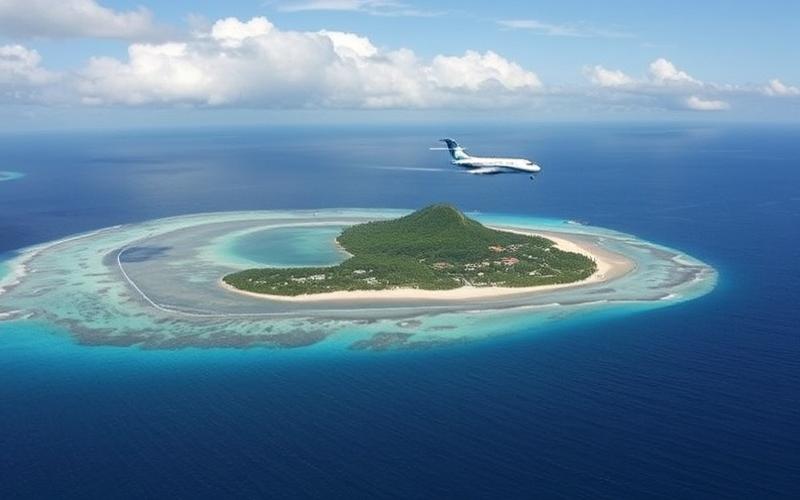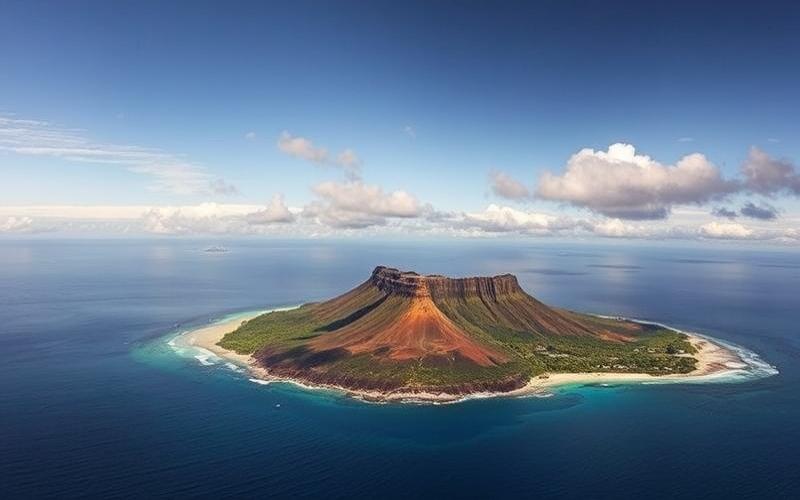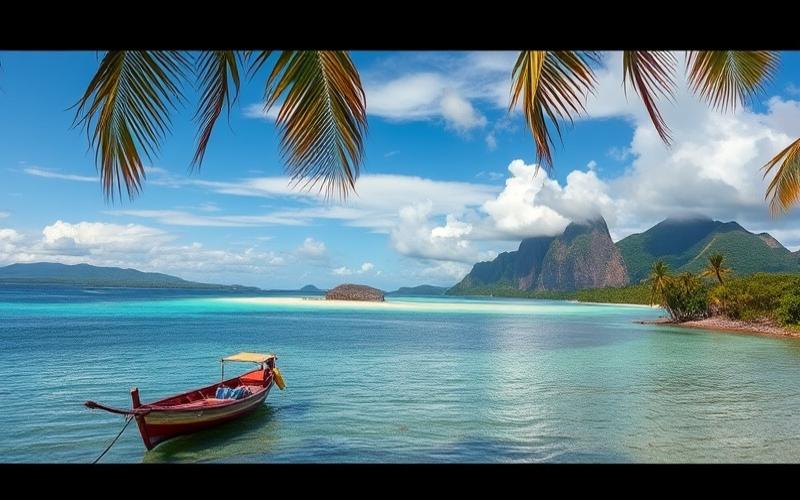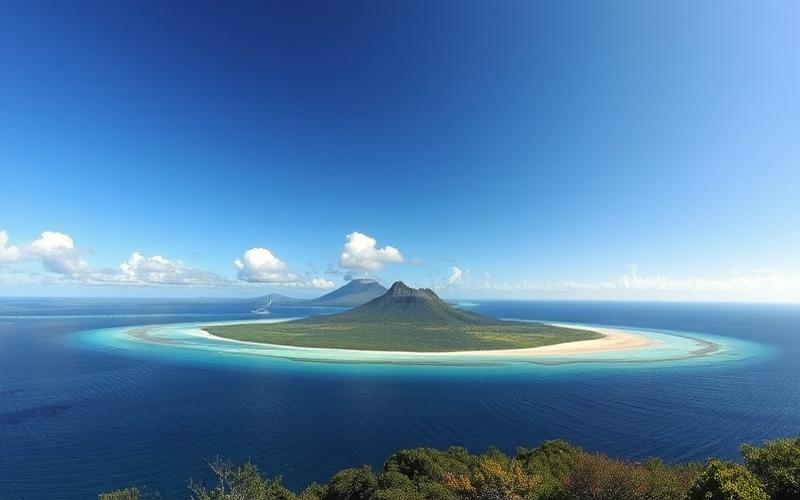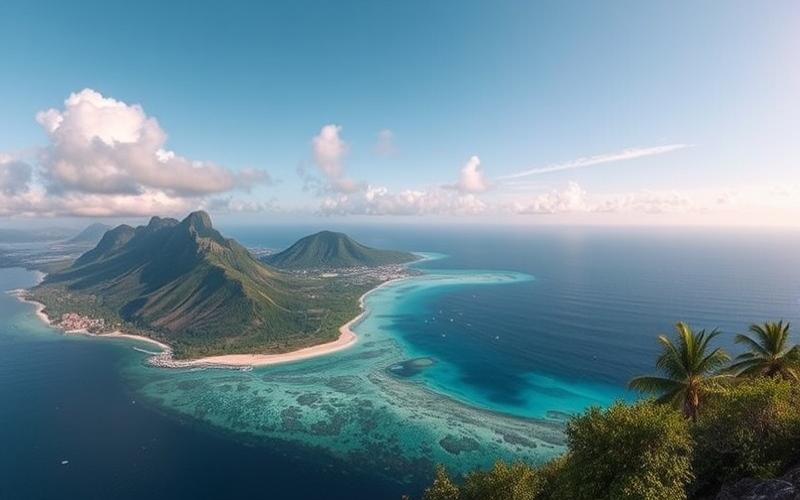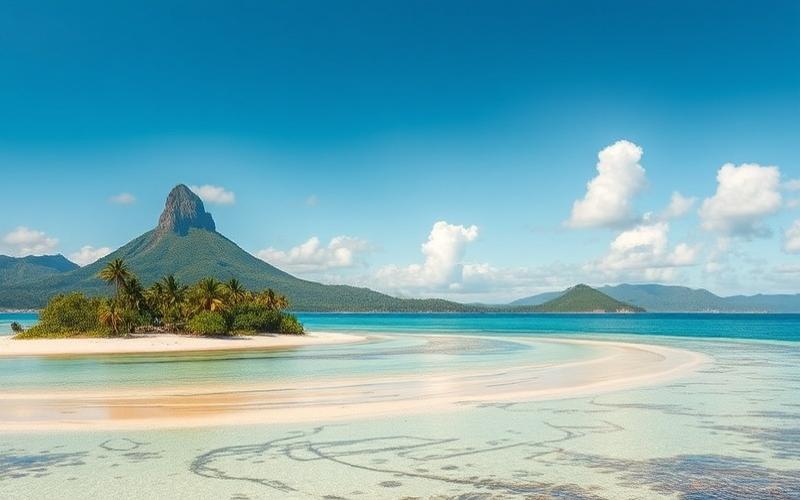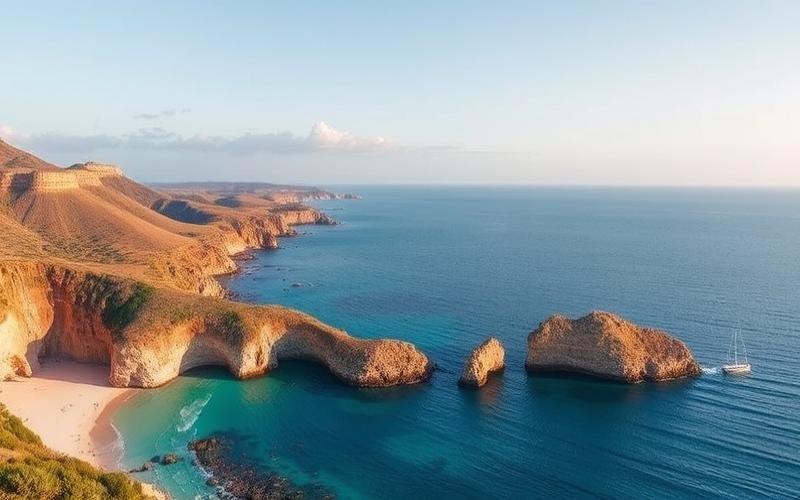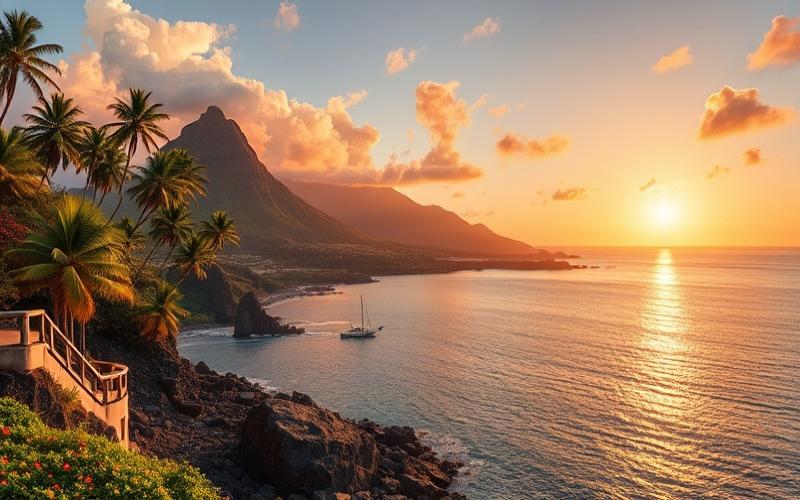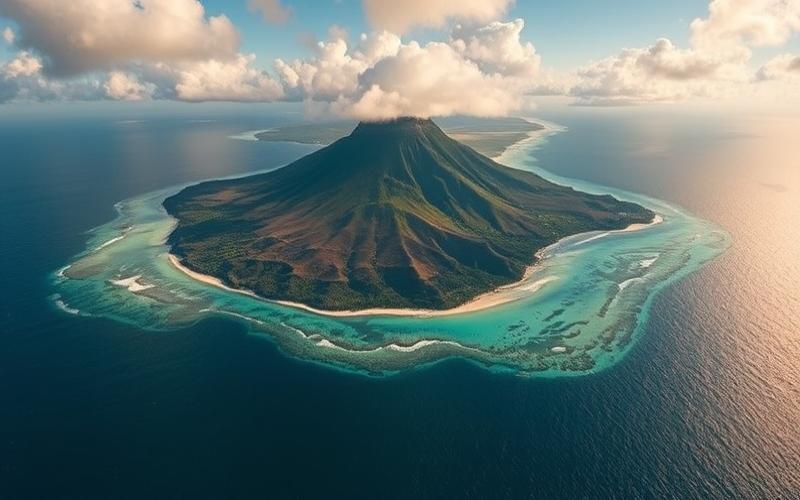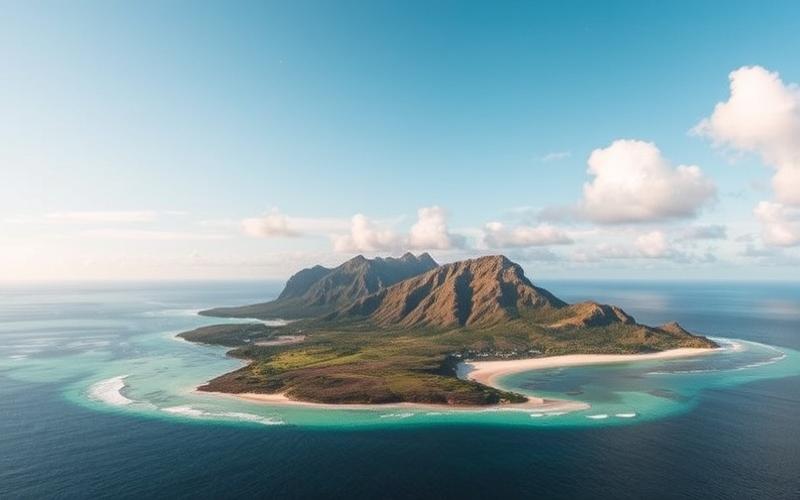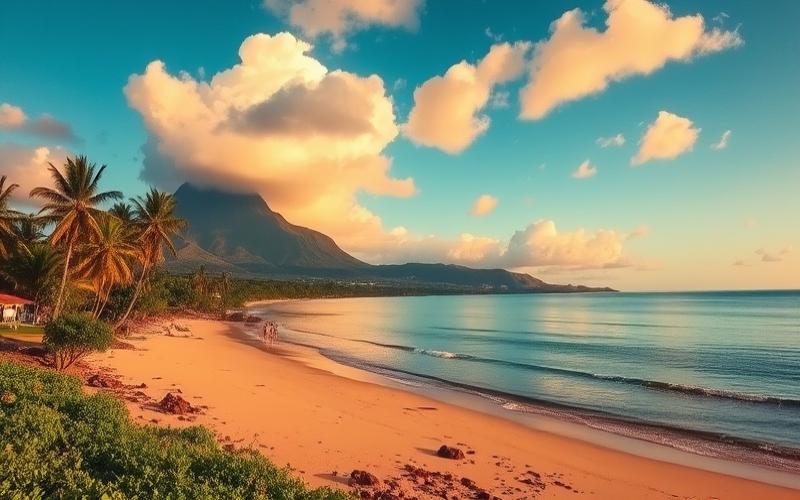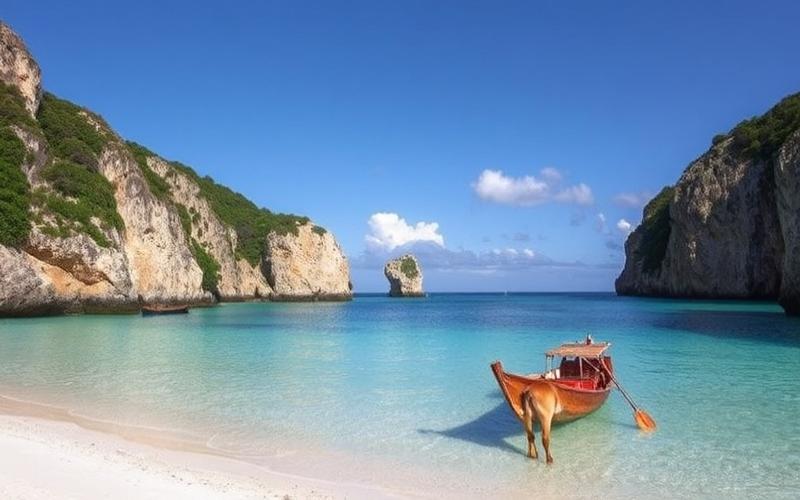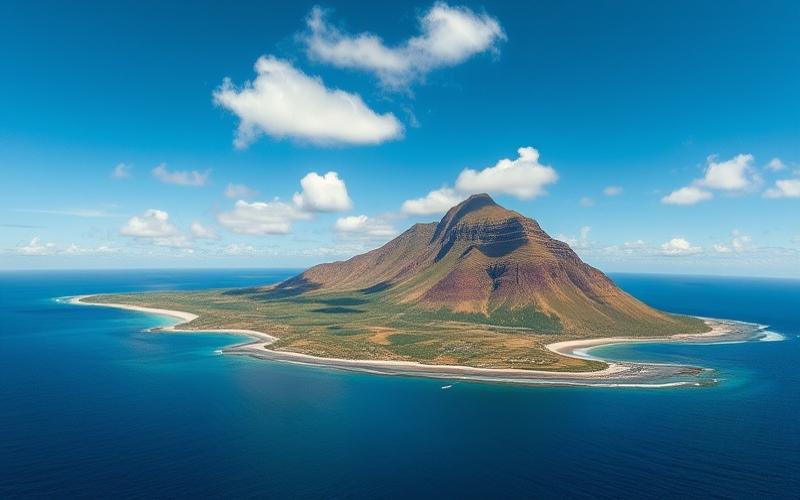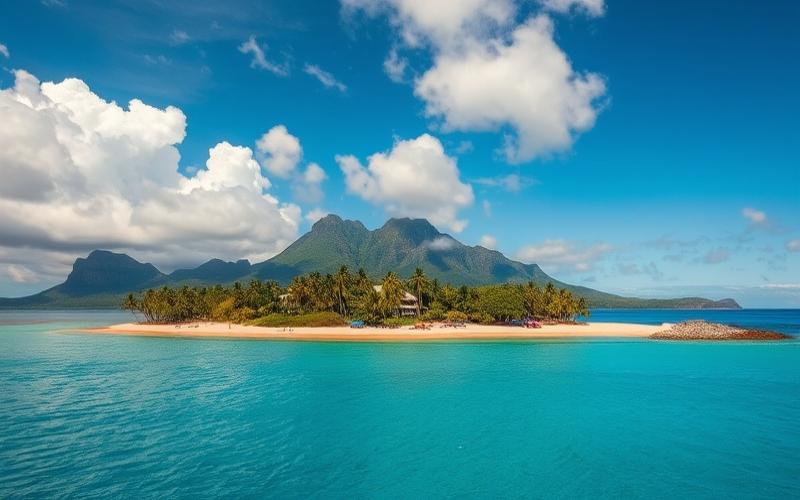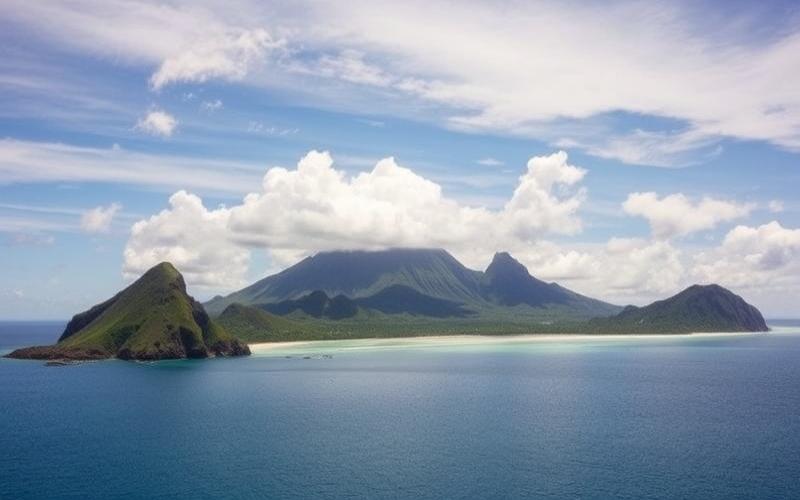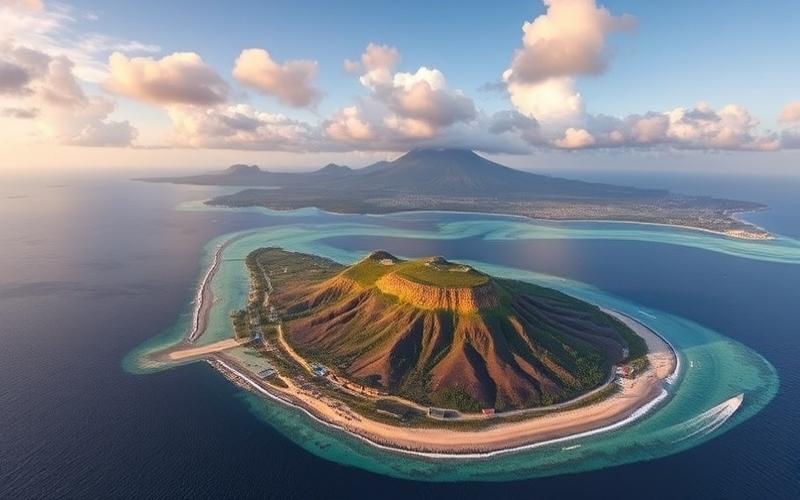
 Published on and written by Cyril Jarnias
Published on and written by Cyril Jarnias
Green Real Estate in Mauritius: A Commitment to the Future
In a context where the environment is becoming increasingly important, Mauritius is decisively turning toward the future with green real estate, adopting innovative standards and benefiting from attractive subsidies planned for 2025.
As the planet unites to combat climate change, the island’s goal is to encourage sustainable construction, combining environmental respect and energy performance.
This article explores the evolution of Mauritian ecological policies, offering an overview of the initiatives implemented to transform the architectural landscape of this idyllic island into an example of sustainable development.
Good to Know:
The subsidies planned for 2025 notably cover solar installations, rainwater harvesting systems, and eco-friendly building materials.
Understanding Green Real Estate Standards in Mauritius
Main Standards and Certifications in Eco-Friendly Real Estate in Mauritius
In Mauritius, the transition toward greener real estate is accelerating under the influence of global trends and local regulations. Developers are now integrating sustainable practices into the design, construction, and management of buildings.
Examples of Recognized Environmental Certifications:
| Certification | Description | Presence in Mauritius |
|---|---|---|
| LEED | Leadership in Energy and Environmental Design: international standard for green buildings | Used in some projects |
| BREEAM | Building Research Establishment Environmental Assessment Method | Rare but growing |
| HQE | High Environmental Quality (French standard) | A few private initiatives |
Local Legislation and Sustainable Regulation
- Requirement to integrate high-performance management systems for water (harvesting, reuse) and energy (solar production, energy optimization).
- Tax incentives for eco-responsible construction.
- Specific restrictions on development in coastal zones to preserve natural ecosystems.
- Gradual requirement to use bio-sourced or recycled materials in new construction.
- National goal: achieve 60% renewable energy by 2030.
Requirements for a Building to Be Considered Green
List of main criteria:
- Predominant use of environmentally friendly materials (low-carbon concrete, recycled elements)
- Systematic installation of green technologies (photovoltaic/solar thermal panels, solar water heaters)
- Advanced systems to recycle or conserve water
- Integrated green spaces (green roofs, shared gardens)
- Rigorous management of waste sorting and treatment during construction and throughout the building’s life
Specific Criteria Evaluating a Green Project in Mauritius:
| Domain | Observed Criteria |
|---|---|
| Energy Performance | High-performance thermal insulation Solar panels Natural ventilation |
| Waste Management | Mandatory selective sorting On-site recycling |
| Sustainable Resources | Local/recycled materials Reduction of conventional concrete |
Local Government Initiatives
- Gradual launch of a specific Mauritian code for sustainable building
- National programs promoting residential/commercial solar through subsidies or tax credits
- Awareness campaigns targeting owners/developers
Influence on the Local Market & Challenges Encountered
“Eco-responsible properties not only appeal to environmentally conscious residents but also increase their market value through durability and reduced energy costs.”
Major challenges identified:
- Significant initial cost overrun linked to new ecological standards;
- Still limited access to locally certified raw materials;
- Relative lack of certified experts in certain international standards;
- Constant need to adapt national legislation to the rapid pace of ecological innovations;
- Gradual acceptance by all stakeholders – although driven by growing demand from buyers;
Mauritian Smart Cities illustrate this evolution: they integrate smart infrastructures enabling better energy efficiency while enhancing local biodiversity.
In summary:
Ecological standards are gradually becoming mandatory in all new Mauritian real estate projects. Driven by strengthened regulations and increased demand from buyers-investors concerned with sustainable development, these requirements are profoundly transforming the island’s built landscape despite some persistent technical and economic challenges.
Good to Know:
In Mauritius, green real estate standards are primarily based on recognized certifications such as BREEAM and LEED, which assess buildings based on energy performance, waste management, and sustainable resource use criteria. Local legislation requires new constructions to comply with strict standards for thermal insulation and carbon footprint reduction. Mauritian government initiatives, like subsidies for solar panel installation, also encourage sustainable development. This legislation pushes developers to invest in green technologies despite financial and technical challenges, thus influencing the real estate market with growing demand for eco-friendly properties.
Where Are Eco-Constructions Located in Mauritius and What Are Their Advantages?
Port Louis, Grand Baie, and the southeast of Mauritius are now key areas for eco-construction development, each benefiting from specific dynamics based on their geographical and economic characteristics.
In Port Louis, the administrative capital and national hub, eco-constructive projects take the form of high-energy-performance office buildings, public spaces redesigned to reduce the urban heat island effect, and renovations integrating local materials and energy-saving technologies. The choice of Port Louis is explained by high urban density requiring a rapid response to climate challenges while optimizing land resources.
Grand Baie, a major tourist destination in the north of the island, is seeing the emergence of high-end eco-responsible residences (bioclimatic villas with green roofs, eco-friendly hotel complexes). These developments capitalize on the exceptional natural setting while meeting the growing expectations of an international clientele sensitive to sustainability.
The southeast (notably Mahébourg and its surroundings) focuses on community projects centered on ecological restoration: collective housing using passive techniques to maximize natural ventilation and solar lighting; educational centers integrating rainwater harvesting or solar panels. This location is justified by a strong desire to preserve a fragile coastline subject to coastal erosion while supporting the local social fabric.
Common Types of Eco-Constructions Observed in These Regions Include:
- Bioclimatic villas with orientation optimized according to prevailing winds
- Low-consumption commercial buildings
- Heritage renovations integrating bio-sourced materials
- Green roofs improving thermal insulation
- Widespread rainwater harvesting systems
Specific Advantages Brought by These Ecological Approaches in the Mauritian Context
| Advantage | Concrete Impact in Mauritius |
|---|---|
| Energy Efficiency | Significant reduction in air conditioning costs thanks to passive systems adapted to the tropical climate |
| Resource Conservation | Increased use of local or recycled wood; rational water management via storage/rainwater |
| Carbon Footprint Reduction | Fewer imports thanks to local materials; massive use of solar energy |
| Enhanced Well-being | Bright spaces open to nature; reduced noise/heat; better indoor air quality |
Projects now rigorously respect national environmental standards such as those imposed during the mandatory Environmental Impact Assessment process, ensuring strict control over energy consumption and sustainable land management. In 2025, they also widely benefit from subsidies granted under the national “Maurice Île Durable” framework, including tax credits for green equipment (solar panels), direct premiums for HQE/LEED/BREEAM certified constructions, and technical support via specialized agencies.
This movement not only contributes to achieving national goals (60% renewable energy in the energy mix by 2030) but also strengthens climate resilience against natural hazards that particularly affect this ocean island.
Good to Know:
Eco-constructions in Mauritius are mainly concentrated in areas like Port Louis, Grand Baie, and the southeast of the island, where eco-friendly housing projects and sustainable hotel complexes are multiplying. These regions are chosen for their tourist appeal and economic growth, fostering initiatives that leverage solar energy and local building materials to minimize environmental impact. These eco-constructions are recognized for their energy efficiency, using rainwater management and waste recycling systems, which contribute to natural resource conservation and carbon footprint reduction. Furthermore, they enhance residents’ well-being through healthy and harmonious living spaces. Underpinning these advantages, eco-constructions meet strict 2025 environmental standards, with tax incentives and government subsidies encouraging green real estate, thereby strengthening the island’s commitment to sustainable development.
How to Obtain Subsidies for Renewable Energy in Mauritius
Renewable energy projects in Mauritius in 2025 benefit from several types of subsidies and support mechanisms, from the government, local financial institutions, and international organizations.
Main Types of Available Subsidies
| Organization | Type/Purpose | Amount/Benefit |
| Mauritian Government | Direct subsidies for solar, wind, and hydroelectric installations; tax incentives; “Waste-to-Wealth” programs for biomass | Up to MUR 30 billion unlocked over several years for the renewable energy sector. Specific investment: MUR 2 billion in 2024-2025 for solar, wind, and hydro. Tax relief for businesses and individuals. |
| Local Financial Institutions (commercial banks) | Preferential rate loans or green credit lines supported by the state or international organizations | Variable amounts depending on project; advantageous conditions via public-private partnerships. |
| International Organizations (e.g., African Development Bank, UNIDO) | Complementary funding (grants or concessional loans), technical support, regional African or island-specific project calls | Variable amounts depending on specific call or program; often up to several million USD/Euro. |
General Application Process
- Preparation of the file
- Drafting of a detailed concept note outlining the project.
- Financial forecast plan.
- Environmental impact study if applicable.
- Eligibility criteria
- Project located on Mauritian territory.
- Technologies recognized as renewable (solar, wind, biomass…).
- Compliance with national environmental and urban planning standards.
- Required documents
- Legal status of the applicant (company/society/co-operative).
- Environmental permit issued by competent authorities if necessary.
- Quotes/proforma invoices for envisaged equipment.
- Administrative steps
- Submission of the file to the relevant ministry (Ministry of Energy), Economic Development Board Mauritius, or partner banking institution depending on the nature of the targeted funding.
- Technical and financial review by an ad hoc committee; responses to any additional requests.
- Potential timelines
- Administrative processing: generally between 2 to 6 months depending on the complexity of the file.
- Effective disbursement after signing agreements: within a few additional weeks.
Amounts Granted
- Individual residential projects: partial subsidy typically covering between 20% to 40% of initial costs capped around MUR 100,000 – MUR 500,000 depending on size;
- Commercial/large collective projects: access to larger funding potentially exceeding one million or even tens of millions MUR;
- Tax incentives in the form of temporary exemptions on certain taxes related to generated income.
Useful Resources & Contacts
- Economic Development Board Mauritius — centralized platform for sector information & personalized support;
- Mauritian Ministry in charge of Renewable Energy — one-stop administrative desk;
- Local partner banks specialized in “green loans”;
- International portals such as those managed by AfDB/UNIDO dedicated to African island project calls.
Potential Impacts on Green Real Estate
Subsidies strongly stimulate sustainable real estate development:
- Significant reduction in initial costs linked to ecological equipment integrated into new buildings,
- Acceleration of the “green building” label through facilitated compliance with new national energy standards,
- Increased property value with enhanced appeal to both local and international investors,
- Direct contribution to the national goal: achieve at least 60% electricity from renewable sources by the end of the decade.
Key takeaway: The established framework creates a robust incentive system favoring not only the energy transition but also a profound shift toward low-carbon real estate structuring the entire current and future Mauritian economic fabric.
Good to Know:
In Mauritius, 2025 offers several opportunities to obtain subsidies for renewable energy projects, notably through the Mauritian government, local financial institutions, and international organizations. To be eligible, projects must generally meet criteria related to sustainability and technological innovation. Application files must include documents such as a detailed project plan and proof of financial viability. Administrative procedures often involve online submission followed by evaluation by a specialized committee, with response times varying from a few weeks to several months. Amounts granted can range from partial funding to full coverage for certain types of projects. Project leaders can refer to Mauritius Renewable Energy Agency resources and consult available online guides to optimize their chances of success. These subsidies play a key role in the rise of green real estate on the island, reducing the costs of eco-responsible construction and encouraging innovations that enhance building sustainability.
BREEAM Certification in Mauritius: A Guarantee of Environmental Quality
BREEAM certification constitutes an internationally recognized guarantee of environmental quality, attesting to the sustainable performance of buildings. In Mauritius, it represents a strategic lever to improve energy efficiency and limit the ecological impact of the real estate sector.
Advantages of BREEAM Certification
- 30% to 40% reduction in energy consumption compared to local regulatory standards
- Up to 40% decrease in CO₂ emissions
- Optimization of indoor climate comfort for users
- Increased real estate value and enhanced appeal to investors and tenants concerned with eco-responsibility
- Continuous improvement through independent assessment covering design, materials, construction, and operation
| Advantage | Description |
|---|---|
| Energy Efficiency | Significant reduction in operating costs |
| Market Attractiveness | Increased demand for certified properties |
| Environmental Quality | Comprehensive framework integrating biodiversity, water/energy management |
| Occupant Well-being | Improved health/comfort thanks to better design |
Importance for Local Ecological Performance
In the Mauritian context marked by high dependence on energy imports and elevated climate vulnerability (cyclones, heat), BREEAM stands as a rigorous framework promoting:
- Rational use of local natural resources (rainwater, natural ventilation)
- Landscape integration adapted to the humid tropical climate
- Limitation of fossil fuel use via renewable energies
Perception by Mauritian Real Estate Actors
Developers see this certification as a differentiating commercial argument in the high-end market. Institutional investors now prioritize this label as a criterion when financing or acquiring recent commercial or residential assets.
Recent Examples in Mauritius
Several emblematic projects have obtained or are aiming for BREEAM certification:
- A technology park in the Ebene cybercity designed according to “Very Good” standards, integrating photovoltaic solar panels, greywater recovery, and filtering gardens.
- A seaside hotel complex focused on circular economy (local bio-sourced materials) aiming for “Excellent”, with smart energy-water-waste management.
These achievements notably respect:
- Strict standards for thermal envelope adapted to the climate,
- Advanced waste management during construction/operation,
- Active policy in favor of soft mobility (electric bikes/charging points).
Tax Incentives & Available Subsidies
The Mauritian government actively encourages these approaches via:
- Partial exemptions on certain land duties when submitting a “green” building permit
- Sustainable development tax credit accessible under conditions for private/institutional players investing in new certified construction
- Facilitated access to certain international funds intended for climate finance
Potential Impact on the Local Economy & 2025 National Objectives
The gradual generalization of the BREEAM framework directly contributes:
- To creating skilled jobs in local environmental consulting,
- To strengthening sustainable tourism/business attractiveness,
- To accelerating the transition toward a low-carbon built environment in line with national commitments inscribed in Vision 2030.
Challenges & Opportunities Specific to the Mauritian Context
Challenges:
- Initial cost overrun linked to imported certified sustainable materials or innovative technologies still little diffused locally.
- Need to adapt certain generic European technical criteria to the tropical island microclimate.
Opportunities:
- Unique valorization possible around local bio-sourced sectors (bamboo, volcanic stone)
- Pioneering regional positioning vis-à-vis neighboring African/West Indian markets also seeking to green their real estate
In sum, despite some constraints linked notably to limited resources inherent to a geographically isolated island as well as the continuous need for local regulatory adaptation, massively adopting the BREEAM standard clearly opens the way toward more resilient urbanism, economically competitive and aligned with national sustainable ambitions.
Good to Know:
In Mauritius, BREEAM certification is a recognized guarantee of environmental quality that significantly improves the ecological performance of buildings. It is crucial for local real estate market players who perceive it as a strategic asset and a key differentiator. Recent projects, such as the commercial building The Habitat and the residential complex EcoPark, have obtained certification by adhering to strict sustainability standards, including efficient management of energy and natural resources. To encourage this approach, tax incentives and subsidies are offered by the government, thus stimulating the local economy while aligning with national sustainable development objectives by 2025. However, challenges specific to Mauritius, such as local regulations and climatic conditions, require adaptation of practices to ensure that BREEAM certification remains relevant and accessible.
Disclaimer: The information provided on this website is for informational purposes only and does not constitute financial, legal, or professional advice. We encourage you to consult qualified experts before making any investment, real estate, or expatriation decisions. Although we strive to maintain up-to-date and accurate information, we do not guarantee the completeness, accuracy, or timeliness of the proposed content. As investment and expatriation involve risks, we disclaim any liability for potential losses or damages arising from the use of this site. Your use of this site confirms your acceptance of these terms and your understanding of the associated risks.

